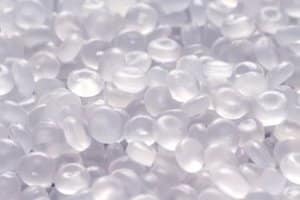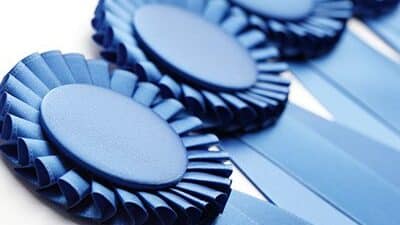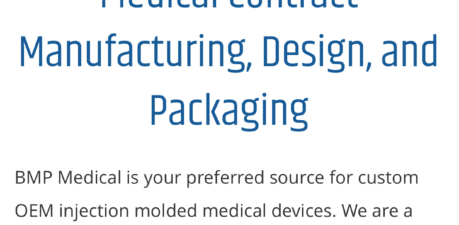Understanding what are the most common thermoplastics used in medical device injection molding is very important. Selecting the correct medical-grade plastic material for a project is a critical decision in manufacturing the perfect part. When working with an injection molding CMO medical device and component partner, it is important to work with injection molders that adhere to stringent manufacturing standards.
It has long been considered that polymers have a significant advantage over metals in the context of medical applications because the isotonic saline solution that makes up the body’s extracellular fluid is extremely hostile to metals, but it is not normally associated with the degradation of many synthetic high-molecular-weight polymers.
Polymers are typically classified into three groups
Thermoplastics
Thermoplastics are linear or branched polymers that can be melted with heat. They can be molded and removed using conventional techniques. Reheated wax can be molded into a different shape.
Thermosets
Thermosets are cross-linked polymers that are normally rigid and intractable. They consist of a three-dimensional molecular network. Thermosets cannot be remelted. They degrade rather than melt upon heating.
Elastomers (rubbers)
Rubbers are materials that exhibit elastomeric properties. They can be stretched to extension and will spring back when the stress is released.
Thermoplastics represent 90% by weight of all plastic used worldwide. Unlike most thermoset plastics, thermoplastics are processable without any serious loss of properties.
Common thermoplastics in injection molding
Common polymers and their medical uses
Polyethylene - - common thermoplastics used in injection molding for medical devices
This is by far the most popular plastic used worldwide. It is also called polythene. Polypropylene is 34% of all plastic used. It can be used for low- and high-density products. Generally speaking, high-density polyethylene (HDPE) is much more crystalline, has a much higher density, and is often used in completely different circumstances than low-density polyethylene (LDPE). Polyethylene is considered thermoplastic, but with modifications, it can behave as a thermoset. It is a cost-effective medical-grade material. Polyethylene absorbs almost no water, and it cannot be imprinted or bonded with adhesives without pretreatment. Like other synthetic plastics, it is not readily biodegradable. But it is an ideal material for sensitive medical equipment, devices, and supplies used every day in hospitals. This ideal medical-grade plastic is corrosion-resistant and retains its overall performance and structural integrity after frequent sterilization cycles.
Its high impact resistance, resistance to chemicals, and low moisture absorption make it a choice for medical-grade devices and components. Polyethylene doesn’t fade or retain dangerous bacteria, and it can withstand harsh cleaning agents. It is often one of the materials used in medical implants because it is a porous synthetic polymer that is biologically inert and does not degrade in the body.
Polyethylene is a very versatile material and is often referred to as the “steel” of plastics because it can so easily be customized for a variety of different uses. It is commonly used for containers, bottles, and many tubing applications, but it is vulnerable to UV radiation and is flammable. It has a tensile strength of 4,000 psi.
Product benefits of polyethylene include
- chemical resistance
- eco-friendly
- easy to clean
- flexible
- good stability
- heat resistance
- impact resistance
Polyethylene is commonly used for tubing applications, connectors, bottles, and plastic surgery implants.
Polypropylene - - common thermoplastics used in injection molding for medical devices
Polypropylene is a thermoplastic polymer used in a wide variety of applications. It is a white, mechanically rugged material and has a high chemical resistance. Polypropylene is used for protective packaging and medical equipment is tough and durable and can be recycled down from cars and households. It can be melted and reformed into plastic pellets that then are used to make new products. In fact, polypropylene bottles and containers are collected for recycling in most curbside programs across the country. Recycling polypropylene helps keep this superhero out of landfills.
Polypropylene’s characteristics make it ideal for tough, robust products, ranging from protective car bumpers to lifesaving medical tools to cold-weather gear for our soldiers. It has a very high tensile strength of 4,800 psi.
Product benefits of polyamide include
- stress resistance
- crack resistance
- great fatigue resistance
- good chemical resistance
- high performance
- good impact resistance
- high melting point
Within these different thermoplastic categories, there are thousands of variations to choose from. Ultimately, every OEM needs to consider the material’s hardness, flexibility, weight, and overall cost. Many factors come into play when selecting a thermoplastics to be used for medical device injection molding.
Polypropylene is commonly used to manufacture disposable syringes, membranes for membrane oxygenators, connectors, finger-joint prostheses, nonabsorbable sutures, reusable plastic containers, pharmacy prescription bottles, and clear bags.
Polystyrene
Polystyrene is one of the most widely used plastics. It is an inexpensive resin per unit weight. It is a rather poor barrier to oxygen and water vapor, and it has a relatively low melting point. Polystyrene is generally a glassy transparent and hard type of polymer. It is produced by the radical polymerization of styrene and can be solid or foamed. Polystyrene Petri dishes and other laboratory containers such as test tubes and microplates play an important role in biomedical research and science. For these uses, articles are almost always made by injection molding, and often sterilized after molding, either by irradiation or by treatment with ethylene oxide. It has a very high tensile strength of 3,600 psi.
Polystyrene is used for a range of medical applications, including test tubes, Petri dishes, diagnostic components tissue-culture trays, protective packaging, and disposable plastic cutlery.
Polymethyl methacrylate
Polymethyl methacrylate (PMMA) is a synthetic resin produced from the polymerization of methyl methacrylate. A transparent and rigid plastic, PMMA is often used as a substitute for glass. PMMA is a tough and rigid plastic. In addition, it has almost perfect transmission of visible light. And because it retains these properties over years of exposure to UV radiation and weather, it is an ideal substitute for glass. Because PMMA displays the unusual property of keeping a beam of light reflected within its surfaces, it is frequently made into optical fibers for telecommunication and endoscopy.
It is commonly used to make bone cement, artificial teeth, implanted teeth, denture materials, dental fillings, intraocular lens, and membrane for dialysis or ultrafiltration.
Polyvinyl chloride - - common thermoplastics used in injection molding for medical devices
Polyvinyl chloride (PVC) is one of the most commonly used thermoplastic polymers in the world. It is used most commonly in the construction industry, but is also used for signs, healthcare applications, and as a fiber for clothing. PVC is produced in two general forms: (1) rigid or unplasticized polymer (RPVC) and (2) flexible plastic. Flexible PVC is commonly used in construction as insulation on electrical wires or in flooring for homes, hospitals, schools, and other areas where a sterile environment is a priority, and in some cases as a replacement for rubber. Rigid PVC is also used in construction as pipes for plumbing and for siding.
Some of the most significant properties of polyvinyl chloride (PVC):
Density: PVC is very dense compared to most plastics (specific gravity around 1.4)
Economics: PVC is readily available and cheap.
Hardness: Rigid PVC is very hard.
Strength: Rigid PVC has extremely good tensile strength.
PVC is commonly used to manufacture disposable medical articles, hemodialysis or hemoperfusion, blood tubing line, cardiac catheters, blood bags, and artificial limb materials.
Polyamides (nylons) - common thermoplastics used in injection molding for medical devices
Polyamide, also known as nylon, is a synthetic thermoplastic polymer. It offers an extremely broad range of available properties and is used in cars, combs, pump parts, screws, and in films for food-packaging needs. It is often used as a substitute for low-strength metals, and because of its strength, inflexible nature, temperature resilience, and chemical compatibility.
Polyamide plastic is good for CNC machining, injection molding, and 3D printing. It has a higher impact-strength factor compared to polystyrene, or polycarbonate. And its strength factor can be increased even more by a process called “conditioning” and/or be combined with other materials to improve its overall strength. It is a good option for parts that see a lot of wear and tear.
The range of polyamides available offers many advantages. Nylons tend to provide good resistance to most chemicals. However, it is one of the trickiest materials to mold and requires a strong processing plan in place to prevent variations, defects, and excessive waste. Polyamide in most cases is considerably more costly. It has a very high tensile strength of 76 MPa (11,000 psi).
Product benefits of polyamide include
- excellent chemical resistance
- great wear resistance
- great fatigue resistance
- good chemical resistance
- high performance
- good impact resistance
- abrasion resistance
- good for short injection cycles
Nylon (polyamide) fibers are used in textiles, fishing lines, and carpets. Nylon films are used for food packaging, gears and bearings (because of its self-lubricating properties), nylon-bristled toothbrushes, electrical insulations, and cable ties.
Acrylonitrile butadiene styrene (ABS)?
Acrylonitrile butadiene styrene (ABS) is a very common thermoplastic polymer and is ideal for very vigorous critical applications. It is commonly used in part production and 3D-print manufacturing for OEM manufacturers. Essentially, the three https://www.merriam-webster.com/dictionary/constituents materials provide a balance of properties: butadiene units impart good impact strength; acrylonitrile units afford heat resistance; and styrene units give the co-polymer its rigidity. ABS is regarded as a good engineering plastic (that is, a substitute for metals in structural parts). It can be injection molded, blow molded, or extruded. And it is also gamma & EtO sterilizable.
The chemical makeup of ABS makes it easy to melt down and reshape repeatedly without degrading its chemical structure. It is a recyclable plastic, and it is one of the easiest plastics to handle because it cools down and hardens quickly.
It is ideal for manipulating with additional machining, painting, gluing, sanding, and so forth. ABS is not very chemical-resistant and shouldn’t be considered for applications that require UV resistances or electrical insulation. ABS has a tensile strength of 5,500 psi. Common thermoplastics in injection molding for medical device
Product benefits of ABS include
- good tensile strength
- low cost
- shock absorbance
- strong impact
- scratch resistance
- heat resistance
Common uses of ABS are nonabsorbable sutures, tendon prostheses, drug-delivery systems, tracheal tubes, safety helmets, cleaning applications, and housings.
Polycarbonate - common thermoplastics used in injection molding for medical devices
Polycarbonate is a group of thermoplastic polymers that contain carbonate groups within the overall chemical structure. It is naturally transparent to visible light and offers good UV protection. It is often used for eyewear lenses and is considered to be a good alternative to glass. Polycarbonate is a very strong material and is relatively shatterproof and is also a common material used in medical devices.
Many polycarbonate grades are used in medical applications. Medical grades can be sterilized using steam at 120° C, gamma radiation, or by the ethylene oxide (Eto) method.
Polycarbonate is four times stronger than fiberglass and gets its strength from its flexibility, so it gives a little upon impact. It ranges anywhere between 35% and 300% more expensive than acrylic. Its strength is measured in MPa instead of psi. It has a very high tensile strength of 70 MPa (10,152.6 psi).
Product benefits of polycarbonate include
- chemical resistance
- electrical resistance
- good stability
- good chemical resistance
- high performance
- high heat resistance
- impact resistance
- lightweight
- good UV protection
Common uses of polycarbonate are protecting the eye from UV light, lighting lenses, sunglass/eyeglass lenses, swimming goggles, and scuba masks.
Do you have a question for our team about common thermoplastics used in injection molding for medical devices? Contact us today.




